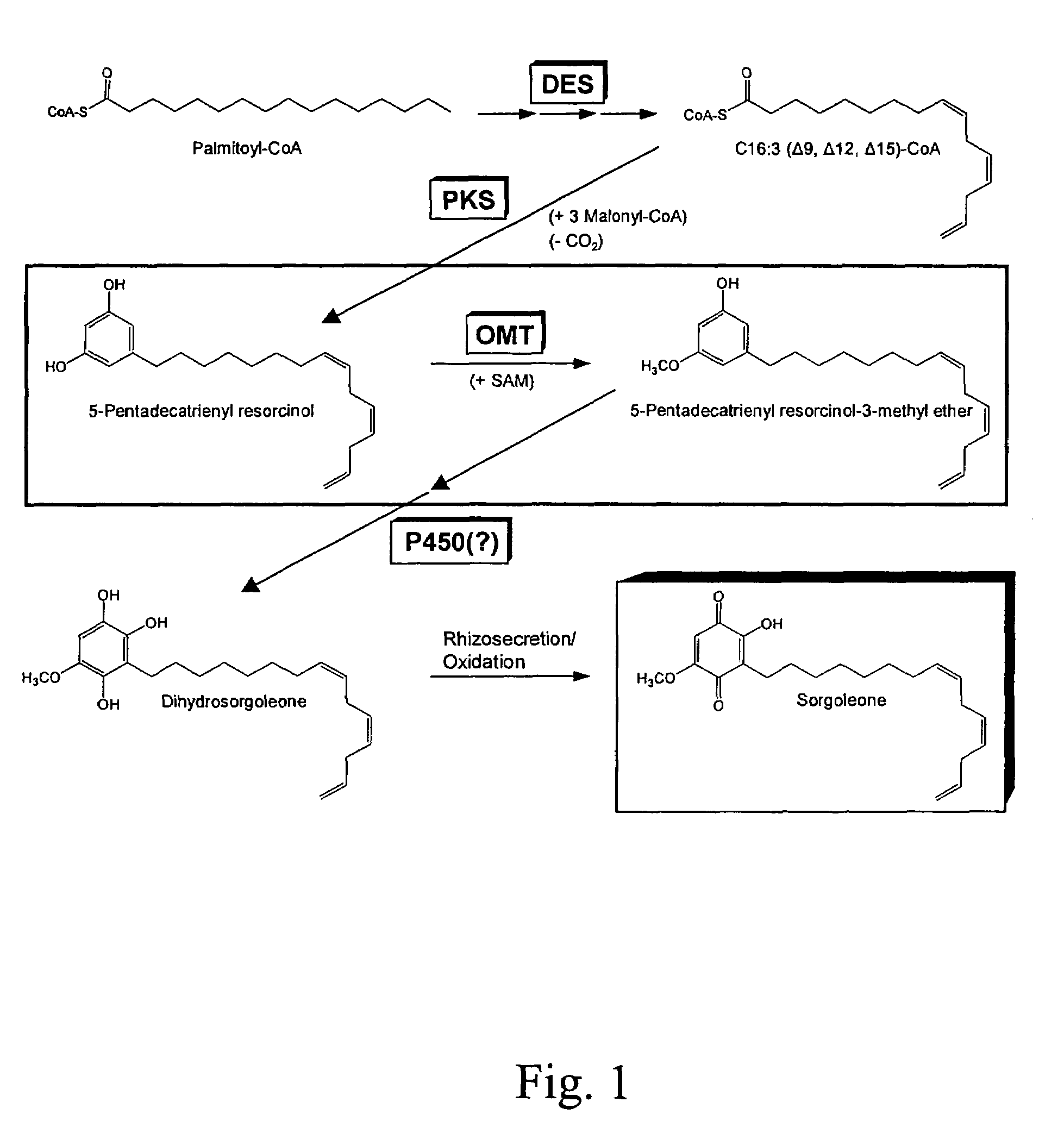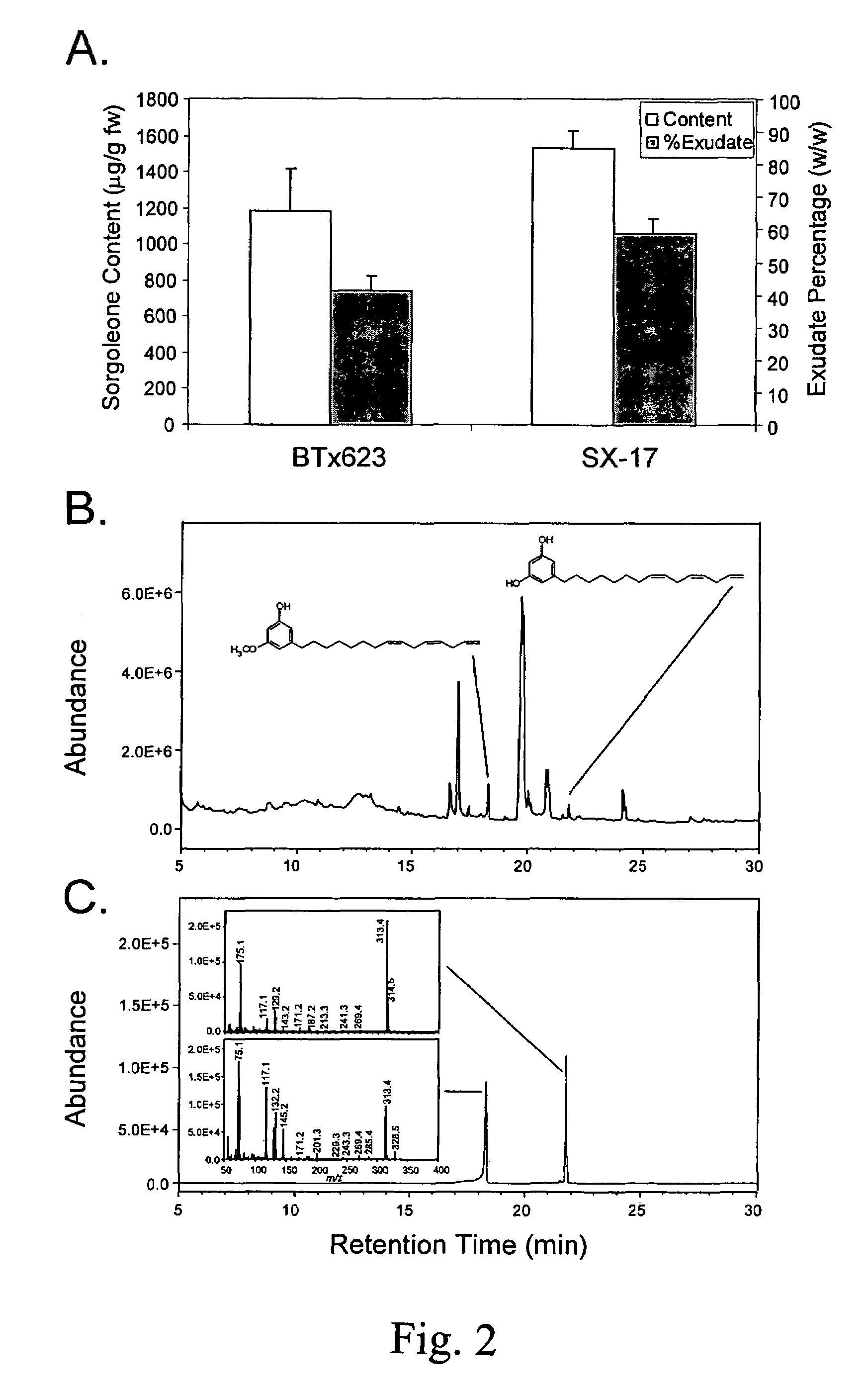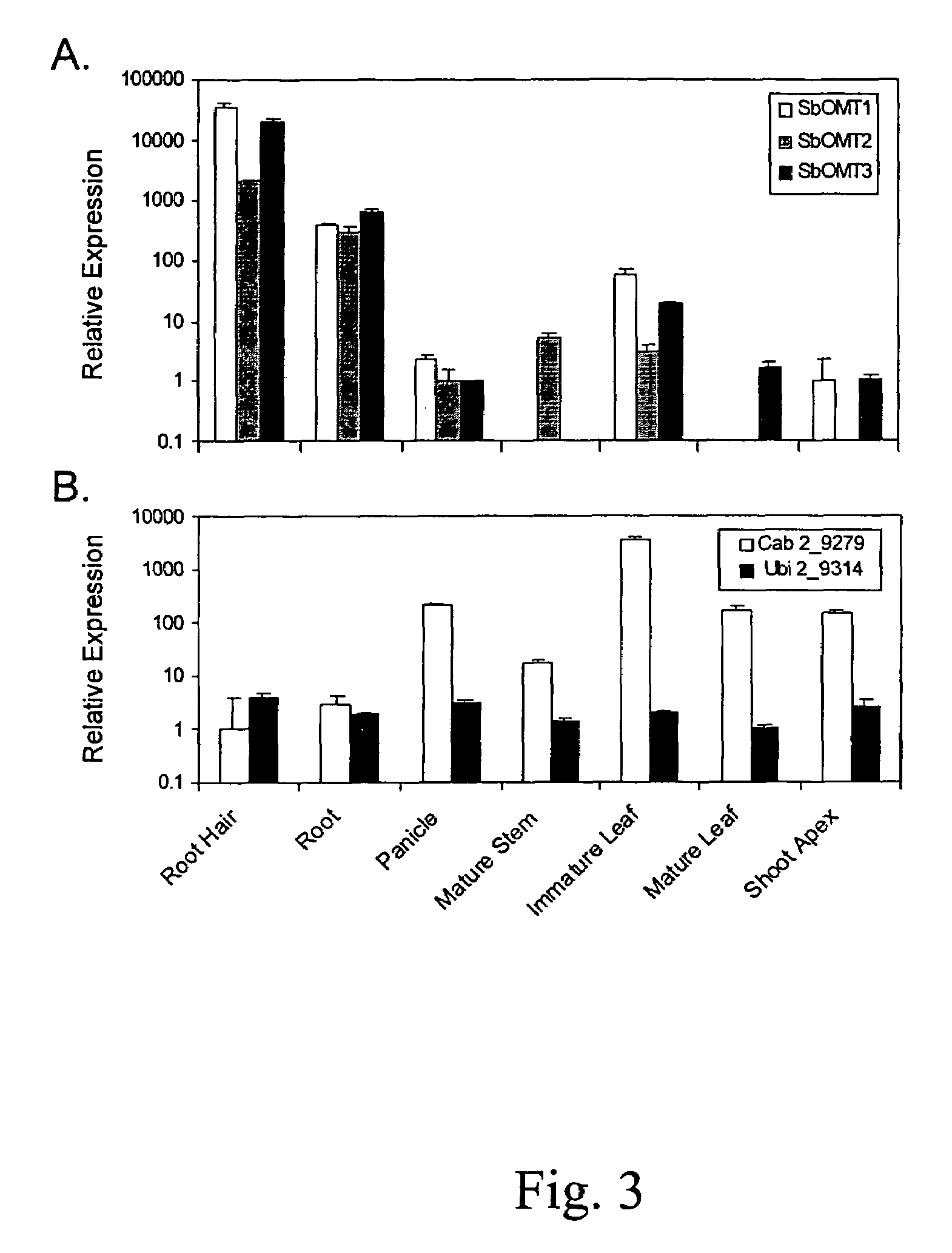O-methyltransferase gene from sorghum cloning, expression, transformation and characterization
a technology of methyltransferase and sorghum, which is applied in the field of omethyltransferase gene, can solve the problems of ineffective resveratrol, and achieve the effect of increasing the amount and increasing the level of pterostilben
- Summary
- Abstract
- Description
- Claims
- Application Information
AI Technical Summary
Benefits of technology
Problems solved by technology
Method used
Image
Examples
example 1
Plant Materials and Growth Conditions
[0085]Seeds of S. bicolor genotype BTx623 were purchased from Crosbyton Seed Company (Crosbyton, Tex.), and SX-17 sorghum-Sudangrass hybrid seeds (S. bicolor x sudanense) were purchased from Dekalb Genetics (Dekalb, Ill.). SX-17 was used for sorgoleone content comparisons with BTx623; all other experiments described in this work involved only BTx623. Root tissues used for sorgoleone content determinations, analysis of C15:3 resorcinols, root hair preparations, and whole root systems used for real-time RT-PCR experiments were obtained from 5 or 8-day-old dark-grown seedlings grown under soil-free conditions using a capillary mat system devised by Czarnota and co-workers (Czarnota et al. 2001, supra). Immature leaves and shoot apices used for real-time RT-PCR experiments were isolated from seedlings maintained in a growth chamber at 28° C. for 8 days in standard (approximately 20×40 cm) nursery flats using Premier Pro Mix PGX potting media (Hummert...
example 2
Sorgoleone Content Determinations
[0086]Root systems from 5-day-old seedlings were weighed, immersed in chloroform and agitated for 30 seconds, then extracts were filtered through Whatman No. 1 filter discs (Whatman Inc., Florham Park, N.J.) to remove debris, concentrated in vacuo at 30° C. using a rotary evaporator (Buchi Rotovapor, Brinkmann Instruments, Westbury, N.Y.), then dried to completion under nitrogen gas, and weighed using an analytical balance. Dried extracts were then re-dissolved in acetonitrile (1.0 mg sample per mL of acetonitrile) and analyzed by high performance liquid chromatography (HPLC) using a Hewlett-Packard 1050 HPLC System (Agilent Technologies, Palo Alto, Calif.) equipped with an Alltech EPS C18 column (100 A, 3 μm, 150 mm length, 4.5 mm internal diameter; Alltech Associates Inc., Deerfield, Ill.). The sample was eluted as follows (solvent A is 2.5% acetic acid in water, solvent B is acetonitrile): 0-15 min 45% A / 55% β isocratic; 15-22 min linear gradient ...
example 3
GC-MS Analysis of C15:3 Resorcinols
[0088]Root systems from 8-day-old seedlings were first immersed in chloroform with agitation for 30 seconds to remove sorgoleone, then lyophilized. Lyophilized material was pulverized using a mortar and pestle, followed by homogenization in methanol (approximately 10 g per 50 mL) for 1 min at 25,000 rpm. Homogenates were then filtered through Whatman No. 1 filter discs, then evaporated using a rotary evaporator (Büchi Rotovapor, Brinkmann Instruments, Westbury, N.Y.) at 30° C. Residues were then re-dissolved in methanol and transferred to GC vials. GC-MS analysis was performed using a JEOL GCMate II System (JEOL USA Inc., Peabody, Mass.) using a J&W DB-5 capillary column (0.25 mm internal diameter, 0.25 μm film thickness, 30 m length; Agilent Technologies, Forster City, Calif.). The GC temperature program was initially set to 110° C., raised to 300° C. at a rate of 6° C. / min, then held at this temperature for 2.3 min. Ultra high purity helium was u...
PUM
| Property | Measurement | Unit |
|---|---|---|
| dry weight | aaaaa | aaaaa |
| dry weight | aaaaa | aaaaa |
| temperature | aaaaa | aaaaa |
Abstract
Description
Claims
Application Information
 Login to View More
Login to View More - R&D
- Intellectual Property
- Life Sciences
- Materials
- Tech Scout
- Unparalleled Data Quality
- Higher Quality Content
- 60% Fewer Hallucinations
Browse by: Latest US Patents, China's latest patents, Technical Efficacy Thesaurus, Application Domain, Technology Topic, Popular Technical Reports.
© 2025 PatSnap. All rights reserved.Legal|Privacy policy|Modern Slavery Act Transparency Statement|Sitemap|About US| Contact US: help@patsnap.com



